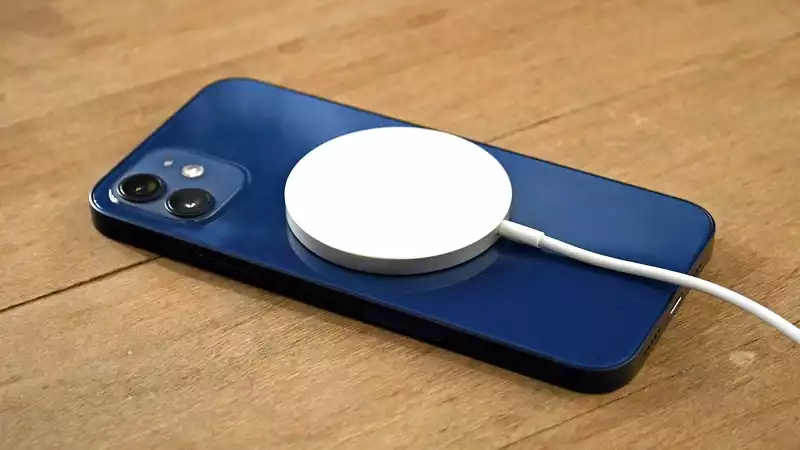The biggest surprise of the iPhone 12 was the magnetic MagSafe charging. But I am getting ahead of myself.
If you don't already know, Apple is using magnets to make Qi charging easier on the iPhone 12. You can even attach a wallet attachment to your iPhone (though it moves a bit in your pocket).
The appearance of MagSafe on the iPhone instead of USB-C may have been a disappointment to many. Samsung has been using USB-C in its phones since the 2016 Galaxy Note 7, and Apple usually doesn't wait this long to catch up.
However, MagSafe may be Apple's answer to USB-C. In fact, Apple's history suggests that the iPhone may skip USB-C and go completely wireless.
Apple added the Lightning connector with the iPhone 5 and iPod in 2012. Since then, this port has dominated every iPhone and multiple iPads. It is suitable for fast charging and data transfer. But like many things, Apple will inevitably replace this port with another, just as it did with the 30-pin dock connector that lasted 11 years (Lightning is approaching its grand total, now 8 years).
As I mentioned in my 2016 article on Lightning headphones, there are corrosion issues on the plug side of the Lightning port, causing poor connections. One of my colleagues is having problems with the Lightning port right now, which is forcing him to update to the iPhone 12.
Then remember the rumor in late 2019 when reputed Mac soothsayer Ming-Chi Kuo told analysts that the iPhone 13 could be completely wireless; Qi charging was still awkward, so it didn't make much sense then.
But it sounded like standard Apple: remove every port and button it could in a race to the future. Ask Apple what happened to the headphone jack in the rest of the industry (Samsung removed it from the Galaxy Tab S7). Apple is ahead of its competitors when it comes to turning standards into "legacy ports," and others often follow suit.
MagSafe changed that, removing the odd game of "is it positioned correctly?" from the standard Qi charging experience. However, it is far from perfect. At least, not yet.
As noted in our iPhone 12 review, MagSafe charging has the same drawbacks as Qi charging. It is not exactly fast. Apple's 20W wired charger can charge the iPhone 12 to 50%, while Apple's 15W MagSafe charger took an hour to charge it to half full.
No one would want such slow charging when the iPhone is supposed to be the best phone out there. Either Apple (or someone else) needs to advance Qi charging technology to speed up MagSafe, or consumer habits will change and they will accept slower charging by charging more often in less time.
Additionally, Qi charging cannot transmit data, and one of the major advantages of Lightning and USB-C is that it can be used to back up devices. Apple may do its best to push everyone to back up to iCloud, but they probably know they can't make it work for everyone.
There is also the issue of the European Union, which voted in favor of a universal charging standard in January of this year. As most have read, this would require all smartphone manufacturers to adopt the same charging standard. This is a very good idea, intended to increase convenience and reduce waste.
This law in the EU still needs to become law. But if it passes, it will probably mean that Apple cannot ditch all charging ports and go MagSafe only.
We don't know what Apple is waiting for. Apple could easily switch iPhones from Lightning to USB-C at any time.
Adding 5G and MagSafe may have been the only major physical change for Apple in the iPhone 12. However, MagSafe shows the plans Apple may have had before the EU pushed Apple to move to USB-C. We'll have to see next year, and with all the iPhone 13 leaks we expect to see along the way.
.









Comments